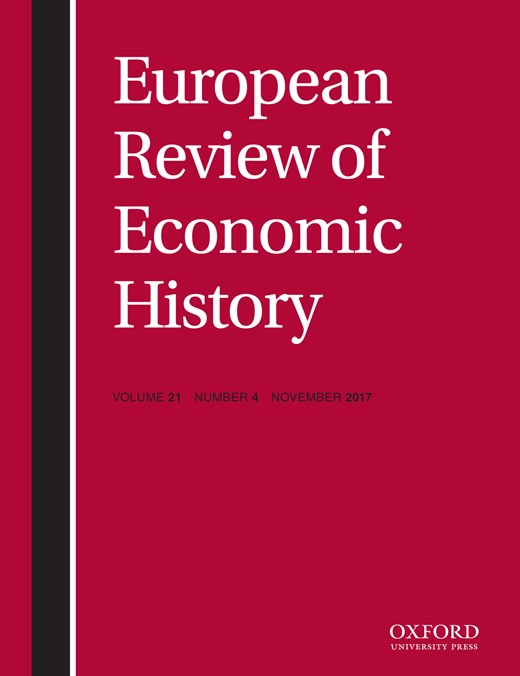-
Views
-
Cite
Cite
Leonardo Ridolfi, The French economy in the longue durée: a study on real wages, working days and economic performance from Louis IX to the Revolution (1250–1789), European Review of Economic History, Volume 21, Issue 4, November 2017, Pages 437–438, https://doi.org/10.1093/ereh/hex026
Close - Share Icon Share
Extract
Supervisors: Alessandro Nuvolari (Sant’ Anna, Pisa, Italy) and Andrea Vindigni (IMT Lucca, Italy)
A long-standing tradition in the literature concerning living standards in pre-industrial France has focused on the study of specific regions, what Philip Hoffman (2000) has eloquently called “local economics.” Yet, to date, there is no comprehensive understanding of the long-term development of wages, prices, and economic performance from a broader national perspective. On the basis of newly constructed data-set containing more than 22,000 wage observations and almost 49,000 price observations, this dissertation provides a comprehensive empirical reconstruction of some of the key macro-economic aggregates of France from the phase of early state formation to the Revolution.
The first section presents new series of real wages for male agricultural laborers and construction workers in France from 1250 to 1789. The analysis highlights three main issues. First, the real wage series suggest that there were only limited long run improvements in living standards for French wage earners before the Industrial Revolution. Second, the estimates reveal that the period 1370–1500 saw the emergence and consolidation of a real wage gap between France and England (with English wages pulling ahead) as well as other leading European cities. Indeed, after a first phase of rapid expansion following the Black Death, by the 1370s real wages in France grew less than elsewhere in Europe where, instead, real wage improvements kept on consolidating till the 1450s. Investigating the origins of this trend, I show that the Hundred Years’ War, with its negative effects on production and labor demand, as well as debasement were important factors in explaining the chronology of the gap in real wages between France and England. Finally, even if demographic data before the 1550s are fragmentary and fragile, it is possible to argue, consistently with the Malthusian interpretation, that the interaction between real wages and population was characterized by a long-lasting inverse relationship. However, while this mechanism appears to hold in general, one can detect a structural break in the relationship that points to a transition from a “high” to a “low” pressure Malthusian regime at least by the early seventeenth century.




